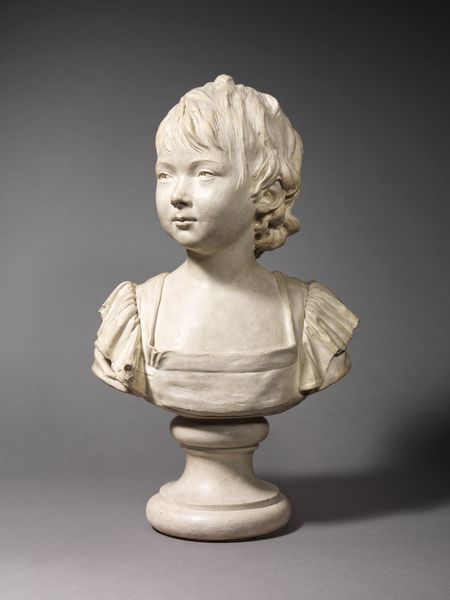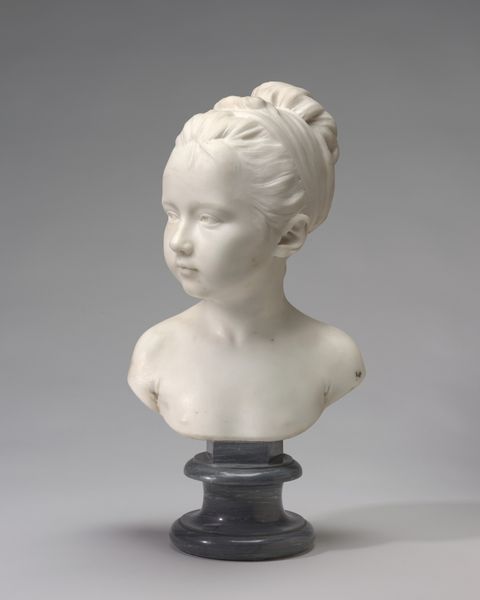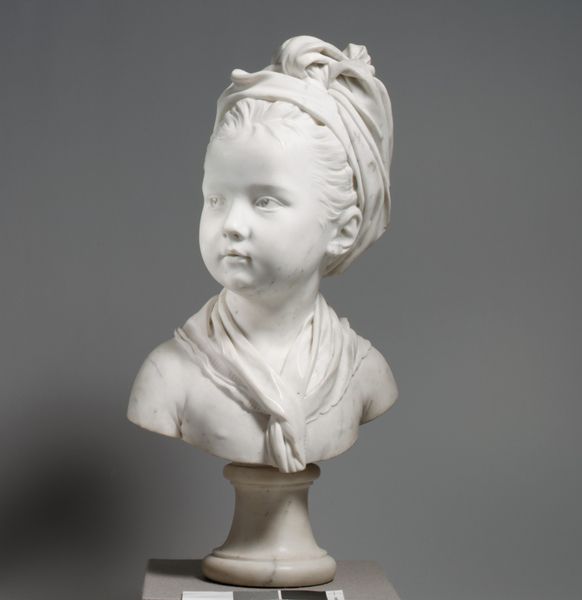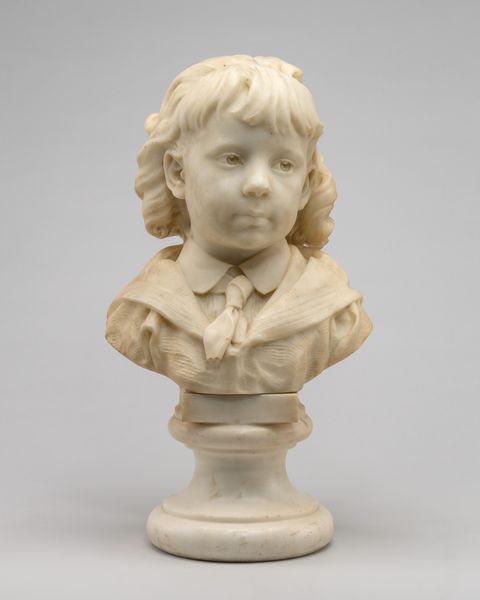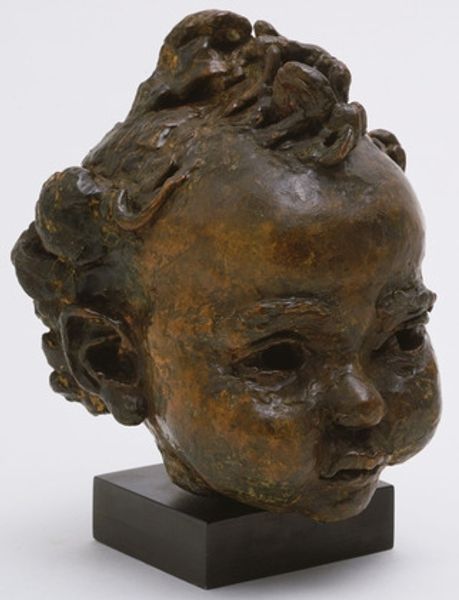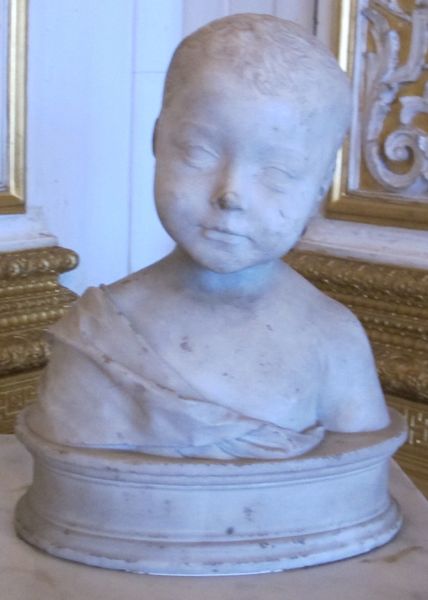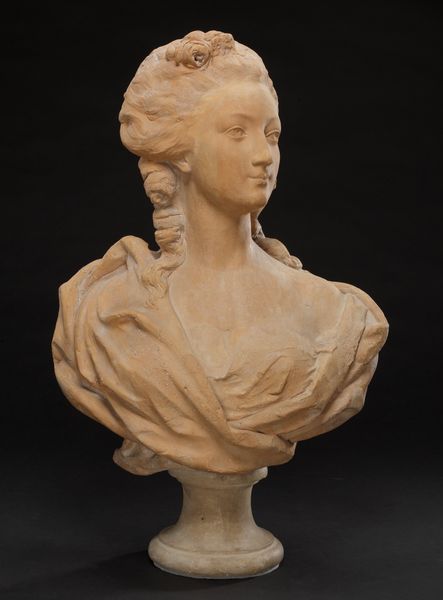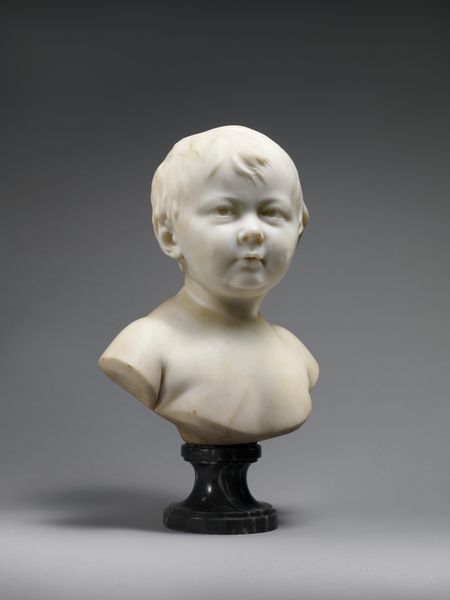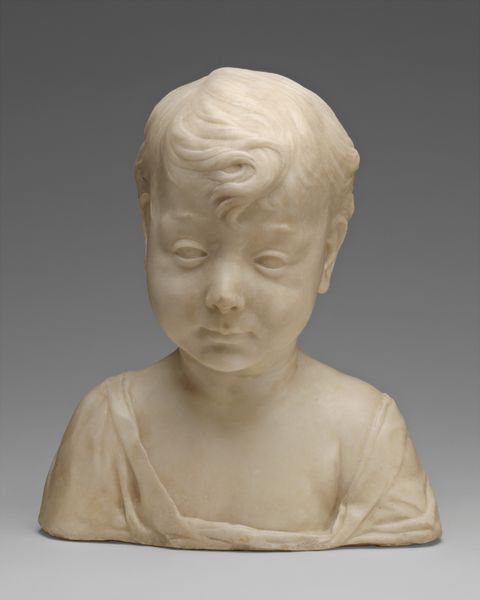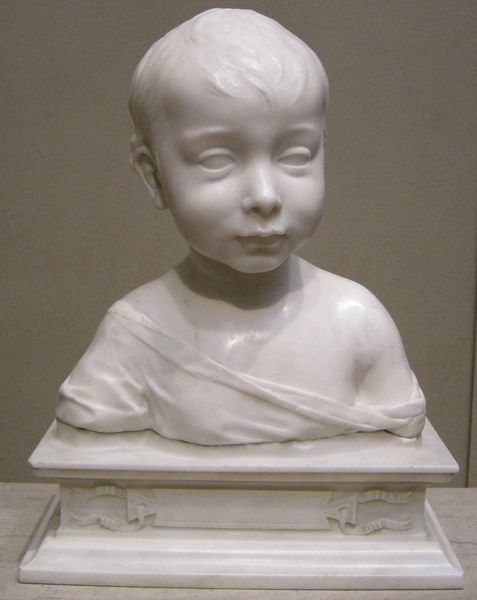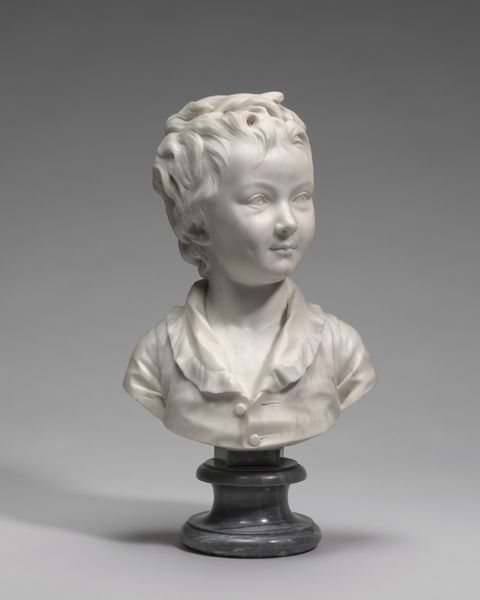
Copyright: Public domain
Curator: Here we have Camille Claudel's "La Petite Châtelaine," a marble sculpture created around 1892. It's currently housed at the Musée Rodin in Paris. Editor: First thought? It feels so… fragile. Like she’s a breath away from dissolving back into the stone she came from. Curator: Claudel’s work provides an interesting entry point into examining gender dynamics within the art world, especially considering her complicated relationship with Rodin, a figure of established power and influence. Did his presence, his instruction and ultimately his shadow both elevate and limit her? Editor: Right? Did the "master" allow the student to truly blossom, or did he subtly prune her ambitions? Looking at her expression... I wonder what this young girl dreamt of becoming? I see both vulnerability and maybe a hint of mischief. It's such a delicate balance. Curator: Consider the social constraints placed on women artists during the late 19th century. Claudel, as a woman artist, was operating within a patriarchal framework, which raises questions about access, representation, and recognition. How was she seen through the eyes of a society that historically privileged male narratives? Editor: It almost feels like Claudel is sculpting a version of her younger self. Carving out space for that girl to simply *be*, to not be overshadowed. The gentle curve of her cheek, the slight tilt of her head... it's all charged with feeling, don't you think? Curator: Absolutely. This sculpture also speaks to broader questions about childhood, innocence, and representation, echoing throughout art history's engagement with young female subjects. Was she aware of her position, her power and, more crucially, what narratives were being placed *upon* her? Editor: Maybe "La Petite Châtelaine" isn't just a portrait, but also a statement—a quiet rebellion etched in marble against the rigid expectations placed on women, both then and now. Curator: Indeed. Perhaps, in revisiting Claudel’s work, we should also question and expand our historical understanding. Her voice deserves a wider platform. Editor: For sure. I think what moves me most is just that… it’s a fragment, just a suggestion. She's whispering stories instead of shouting them, and that's often the loudest way to be heard.
Comments
No comments
Be the first to comment and join the conversation on the ultimate creative platform.

